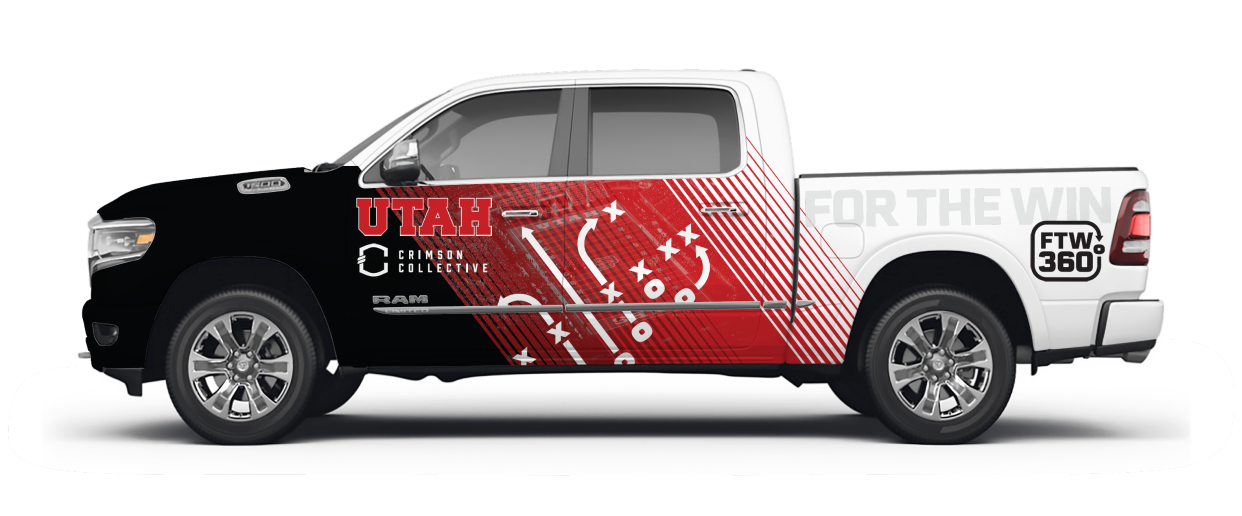Utah NIL group gifts Dodge Ram 1500 trucks to all 85 scholarship football players

On Wednesday, within Utah’s Rice-Eccles Stadium, several brand-new Dodge Ram 1500 Big Horn trucks rolled onto the field in a surprise presentation before members of the Utes football team.
Shortly thereafter, they learned the news: They’re getting a truck.
In one of the most unique and lucrative arrangements of the 27-month-old name, image and likeness era, the Crimson Collective, the NIL group supporting Utah athletics, is presenting a truck to each one of the 85 scholarship members of the football team. The history-making deal is estimated to be in the seven figures. Each truck’s retail price is $61,000.
Funded by collective donations, the trucks will be leased to each player as part of individual six-month contracts that are expected to roll over contingent on a player’s eligibility and enrollment at the university. Leases end when a player’s eligibility expires or they choose to transfer. The collective will also cover the insurance for each truck.
The Ken Garff Automotive Group, one of the country’s largest auto dealers, is facilitating the deal with a host of Utah donors from the Crimson Collective. The collective made the announcement Wednesday as part of a new partnership with the collegiate streaming application For The Win 360 (FTW360), whose branding is plastered on the vehicles in an advertising wrap.
Matt Garff, board chair of the Crimson Collective and part-owner of the Ken Garff Automotive Group, and Derek Mattson, CEO of FTW360, headed the project. It’s been a massive undertaking. Over the next months, nearly 100 trucks will be completed at a Detroit Dodge plant and transported on trailers — five to six trucks at a time — for the 1,600-mile journey to Salt Lake City.
“Moving 100 trucks and getting them built in the middle of an auto-workers strike is pretty incredible,” Mattson said in an interview with Yahoo Sports.
Mattson’s application, FTW360, is a hub for all Utah athletics content, featuring scores, summaries, game highlights, behind-the-scenes stories, news and interviews. The surprise presentation at Rice-Eccles Stadium was live-streamed on the app.
In the college sports world, the arrangement is one of the most unique in the 27 months of the NIL concept. While team-wide group deals are not necessarily unusual, the distribution of nearly 100 new vehicles is certainly unique.
When the players found out they were each getting a Dodge Ram pic.twitter.com/Sofq0knKov
— Josh Furlong (@JFurKSL) October 4, 2023
The trucks satisfy one of three missions of the Crimson Collective, which operates as a 501(c) 3 non-profit. The collective strives to provide education, housing and transportation to Utah athletes through NIL endeavors with local charities.
“If we want them to go around town to help with these causes, we need to provide them transportation,” Garff said. “How do we get these players around to create attention around these causes?”
The answer: a Dodge Ram 1500 Big Horn truck wrapped in an advertisement for an app.
There are family ties here. Garff’s grandfather Ken, the founder of Ken Garff Automotive, attended Utah. Garff’s parents graduated from Utah as well and all of his siblings and their spouses attended the school.
“It runs deep,” Matt Garff said. “We all bleed red through and through. One of our family’s big initiatives is creating incentives at public schools for kids to learn to read and chase dreams.”
The Crimson Collective has raised $3 million since May and has a goal to reach $6 million by December, Garff said.
The total value of the NIL deal with the Dodge Rams is a bit misleading. While the fleet’s total price is steep — more than $6 million — Ken Garff Automotive can sell the trucks to the general public after one year as part of a leasing agreement through United Fleet Management, Matt Garff said.
Garff is uncertain how long the truck deal will extend into the future.
“If it works, we’ll keep going. We are ordering vehicles as we need them,” he said. “The intent is to figure it out and if it works, how to keep it going.”
